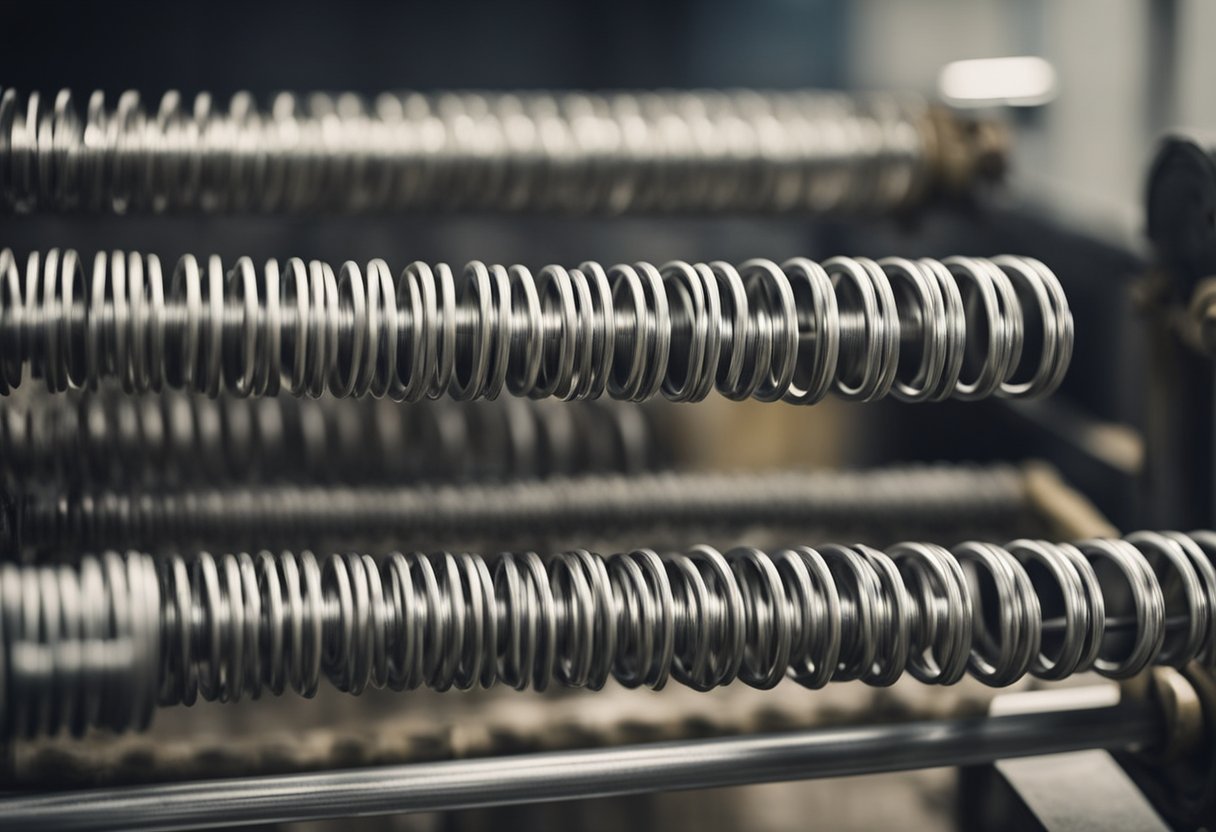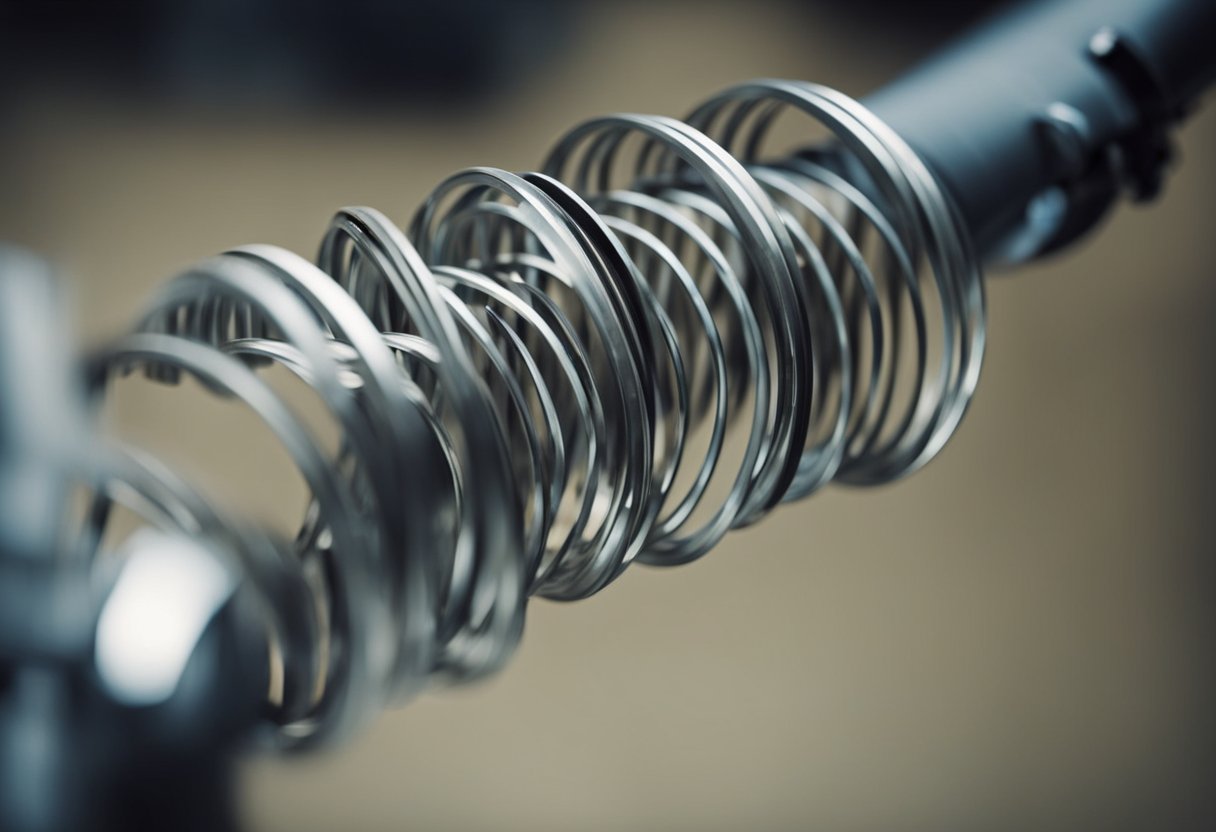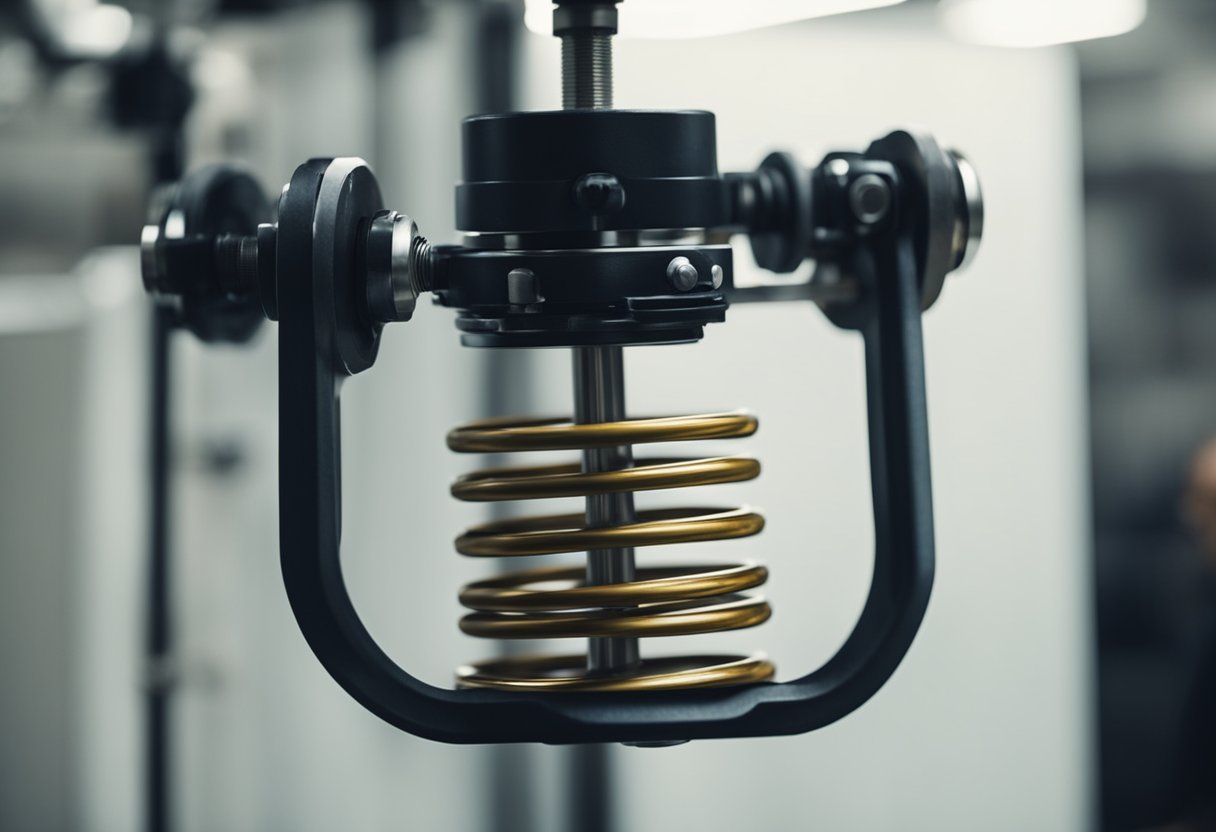Compressing a coil spring is a crucial part of maintaining a vehicle’s suspension system. The process involves compressing the spring to remove it from the strut or shock absorber, replacing it with a new spring or performing other necessary repairs. While there are several ways to compress a coil spring, using ratchet straps is one of the most popular and effective methods.
Understanding coil springs is essential before attempting to compress them. A coil spring is a mechanical device that stores energy and releases it when compressed or stretched. It is typically made of steel and is found in the suspension system of a vehicle. The spring’s job is to absorb any shock or impact that the vehicle experiences while driving, ensuring a smooth and comfortable ride.
To compress a coil spring with ratchet straps, you will need specific tools and follow safety measures and precautions. The process can be dangerous if not done correctly, so it’s essential to take the necessary steps to ensure your safety and the safety of those around you.
Key Takeaways
- Compressing coil springs is an essential part of maintaining a vehicle’s suspension system.
- Ratchet straps are a popular and effective tool for compressing coil springs.
- It’s crucial to understand coil springs, follow safety measures, and use the proper tools when compressing them.
Understanding Coil Springs
https://www.youtube.com/watch?v=1fyU96hiI4E&embed=true
As a mechanic, I understand the importance of coil springs in a vehicle’s suspension system. Coil springs are a vital component of the suspension system, and they play a crucial role in determining the ride height of a vehicle.
Coil springs are made of high-strength steel and are designed to absorb and store energy when compressed. When the vehicle is in motion, the coil springs compress and release the stored energy to maintain the ride height and provide a smooth ride.
There are two types of coil springs in a vehicle’s suspension system: front springs and rear springs. The front springs are typically smaller and lighter than the rear springs, as they carry less weight. The rear springs are larger and heavier, as they carry more weight.
One of the most common reasons for compressing a coil spring is to replace a worn or damaged spring. Compressing the spring with ratchet straps is a safe and effective way to remove the spring from the suspension system.
It is important to note that compressing a coil spring can be dangerous if not done correctly. Always follow the manufacturer’s instructions and use the proper tools and equipment to ensure your safety.
Required Tools for Compressing Coil Springs
When it comes to compressing coil springs, having the right tools is essential. Without them, the process can be challenging and even dangerous. In this section, I will go over the tools you need to compress coil springs with ratchet straps safely.
Ratchet Straps
Ratchet straps are the primary tool for compressing coil springs. They are affordable, easy to use, and can handle a significant amount of force. When choosing ratchet straps, make sure they are rated for the weight of your vehicle and the spring you are compressing.
Spring Compressor
While ratchet straps are the primary tool, a spring compressor is also necessary. A spring compressor is a device that compresses the spring, making it easier to remove and install. There are different types of spring compressors available, including internal and external compressors. Choose the one that is suitable for your vehicle and the type of spring you are working with.
Impact Wrench
An impact wrench is a power tool that makes it easier to remove and install bolts. It is especially useful when working with rusted or stuck bolts. However, it is not necessary for compressing coil springs with ratchet straps.
Floor Jack
A floor jack is necessary for lifting the vehicle off the ground. Make sure the floor jack is rated for the weight of your vehicle and that it is stable on the ground.
Torque Wrench
A torque wrench is necessary for tightening bolts to the manufacturer’s specifications. It is essential to ensure that the bolts are not too loose or too tight, which can lead to safety issues.
Safety Glasses and Jack Stands
Safety glasses are essential for protecting your eyes from debris and other hazards. Jack stands are necessary for supporting the vehicle while working on it. Never rely on the floor jack alone to support the vehicle.
Threaded Rod and Chain
In some cases, you may need a threaded rod and chain to compress the spring. This method is not as safe as using ratchet straps and should only be used if you do not have access to ratchet straps.
In conclusion, having the right tools is essential for compressing coil springs safely. Ratchet straps, a spring compressor, a floor jack, a torque wrench, safety glasses, and jack stands are necessary for the job. An impact wrench, threaded rod, and chain may also be useful in some cases.
Safety Measures and Precautions
As I have mentioned earlier, compressing a coil spring with ratchet straps can be dangerous if proper safety measures are not taken. Therefore, it is essential to follow the below safety precautions to ensure a safe and successful job.
-
Wear Safety Gear: Always wear safety glasses and gloves while working with coil springs. These safety gears will protect you from any debris or flying objects that may come off during the compression process.
-
Use High-Quality Ratchet Straps: Always use high-quality ratchet straps to compress the coil springs. Cheap and low-quality straps can break or snap under pressure, which can cause serious injury.
-
Use Jack Stands: It is crucial to place the vehicle on a flat surface and make sure all four jack stands are securely placed on solid ground. This will ensure that your vehicle is properly balanced and won’t move while working on it.
-
Avoid Over-Compression: Over-compression can damage the springs, so always use the right amount of pressure to compress the coil springs. Refer to the manufacturer’s instructions for the recommended compression amount.
-
Work in a Safe Environment: Always work in a well-lit area with enough space to move around. Keep the workspace clean and free of any debris or obstacles.
By following these safety measures and precautions, you can ensure a safe and successful compression of the coil spring with ratchet straps. Remember, safety should always be the top priority when working on any vehicle-related project.
The Process of Compressing Coil Springs
https://www.youtube.com/watch?v=HQNf3te9RSM&embed=true
Preparation
Before compressing a coil spring, it is important to prepare your vehicle and tools. I recommend using ratchet straps to compress the spring as it is a safe and effective method. To begin, park the vehicle on a flat surface and secure it with wheel chocks. Then, jack up the vehicle and place jack stands under the frame or axle for additional support.
Next, remove the wheel and locate the coil spring that needs to be compressed. To access the spring, you may need to remove other components such as the shock absorber or sway bar link. Refer to your vehicle’s service manual for specific instructions.
Compressing The Spring
Once you have access to the coil spring, attach the ratchet straps to the spring and tighten them evenly. Be sure to follow the manufacturer’s instructions for the ratchet straps. As you tighten the straps, the spring will compress, allowing you to remove it or make necessary repairs.
It is important to note that you should never exceed the maximum load capacity of the ratchet straps. Doing so can result in serious injury or damage to your vehicle. Always use caution when compressing coil springs and follow proper safety procedures.
Lowering The Vehicle
After the spring has been compressed and any necessary repairs have been made, it is time to lower the vehicle. Begin by removing the ratchet straps and any other components that were removed during the process. Then, slowly lower the vehicle back onto the ground using the jack and jack stands.
Once the vehicle is back on the ground, torque the wheel lug nuts to the manufacturer’s specifications and test drive the vehicle. Be sure to listen for any unusual noises or vibrations and inspect the spring for proper installation.
In conclusion, compressing coil springs can be a daunting task, but with the right tools and knowledge, it can be done safely and effectively. Always follow proper safety procedures and consult your vehicle’s service manual for specific instructions.
Troubleshooting Common Issues
When compressing a coil spring with ratchet straps, there are a few common issues that may arise. Here are some tips to help you troubleshoot these issues:
Over-Compression
Over-compressing a coil spring can cause it to lose its shape and become ineffective. To avoid over-compression, it is important to measure the length of the spring before compressing it. This will give you an idea of how much you need to compress it to fit it back into your vehicle. If you are unsure of how much to compress the spring, it is always better to err on the side of caution and compress it less than you think you need to.
Buckling
Buckling can occur when the ratchet straps are not placed properly on the coil spring. To avoid buckling, make sure that the straps are evenly spaced and that they are not placed too close to the top or bottom of the spring. You should also make sure that the straps are tightened evenly so that the spring compresses evenly.
Old Thread
If your ratchet straps have old thread, they may not be as strong as they once were. This can cause the straps to break or slip while you are compressing the spring. To avoid this issue, it is important to inspect your ratchet straps before using them. Look for signs of wear and tear, such as frayed edges or weak spots. If your straps are showing signs of wear, it is best to replace them with new ones.
New Thread
If you are using new ratchet straps, they may be too stiff to use effectively. To avoid this issue, it is important to break in your straps before using them. To do this, simply use them a few times to stretch them out and make them more pliable. This will help ensure that they are able to compress the spring effectively.
By following these tips, you can troubleshoot common issues that may arise when compressing a coil spring with ratchet straps. Remember to always prioritize safety and take your time to ensure that everything is done correctly.
Professional Vs DIY Coil Spring Compression
When it comes to compressing coil springs, there are two main methods: professional and DIY. Each method has its own advantages and disadvantages, and it’s up to you to decide which one is right for you.
Professional Coil Spring Compression
Professional coil spring compression is typically done by a mechanic or automotive shop. They use a coil spring compressor, which is a specialized tool designed to compress coil springs safely and efficiently. This method is the most reliable and safe way to compress coil springs, as it minimizes the risk of injury and ensures that the spring is compressed evenly.
However, professional coil spring compression can be expensive. The cost of labor and the tool itself can add up quickly, especially if you need to have multiple springs compressed. Additionally, you may need to wait for an appointment or for the tool to become available.
DIY Coil Spring Compression
DIY coil spring compression is an alternative method that can save you money and time. This method involves using ratchet straps, which are inexpensive and easy to find. However, it’s important to note that DIY coil spring compression can be dangerous if not done correctly. You must be careful and follow the proper steps to ensure your safety and the safety of those around you.
The DIY method may be suitable for those who have experience with automotive maintenance and repair. If you’re a beginner, it’s recommended that you seek professional help or guidance before attempting to compress coil springs on your own.
In conclusion, both professional and DIY coil spring compression methods have their own advantages and disadvantages. While professional compression is the safest and most reliable method, it can be costly. DIY compression can save you money, but it requires caution and experience. Ultimately, the decision is yours, and you should choose the method that best suits your needs and abilities.
Additional Resources
https://www.youtube.com/watch?v=wvVaHTkVw9U&embed=true
If you’re interested in learning more about how to compress a coil spring with ratchet straps, there are a few additional resources that you might find helpful.
Video Tutorials
Video tutorials can be a great way to see the process of compressing a coil spring with ratchet straps in action. There are many videos available on YouTube that demonstrate this process, some of which have been linked below:
These videos provide step-by-step instructions and visuals to help you understand the process of compressing a coil spring with ratchet straps.
Product Reviews
If you’re in the market for ratchet straps to compress your coil springs, it can be helpful to read product reviews before making a purchase. Websites like Amazon and Walmart have customer reviews for many different types of ratchet straps, which can help you make an informed decision about which product to buy.
When reading reviews, look for comments about the quality of the straps, ease of use, and effectiveness in compressing coil springs. Keep in mind that some reviews may be biased or inaccurate, so it’s important to read a variety of reviews from different sources before making a decision.
Overall, these additional resources can help you gain a better understanding of how to compress a coil spring with ratchet straps and make an informed decision when purchasing straps for this purpose.
Frequently Asked Questions
https://www.youtube.com/watch?v=hVo_wgUMpfY&embed=true
What is a coil spring compressor and how does it work?
A coil spring compressor is a tool used to compress coil springs in order to remove or install them. It works by clamping onto the spring and compressing it, allowing it to be removed or installed without the tension that would normally be present.
How do you safely compress a coil spring with ratchet straps?
To safely compress a coil spring with ratchet straps, it is important to first ensure that the vehicle is on a level surface and that the suspension is properly supported. Then, attach the straps to the spring and tighten them using the ratcheting mechanism until the desired compression is achieved. It is important to use caution and to follow the instructions carefully to avoid injury.
What are the risks of compressing a coil spring without a proper tool?
Compressing a coil spring without a proper tool can be dangerous and can result in serious injury or even death. The spring can suddenly release its tension, causing the tool being used to compress it to fly off and potentially injure someone nearby.
Can you rent a coil spring compressor from an auto parts store?
Yes, many auto parts stores offer coil spring compressors for rent. It is important to ensure that you are using a high-quality tool and that you are following the instructions carefully to avoid injury.
Are there any alternative methods to compress a coil spring?
While ratchet straps are a popular method for compressing coil springs, there are other methods available as well. Some people use hydraulic spring compressors or even homemade tools. It is important to use caution and to ensure that the tool being used is safe and effective.
What safety precautions should you take when compressing a coil spring?
When compressing a coil spring, it is important to wear eye protection and gloves to protect yourself from flying debris. It is also important to ensure that the vehicle is properly supported and that the tool being used is in good condition. Follow the instructions carefully and use caution to avoid injury.

Hi, I’m Sal Muller of Tooltrip.com. My DIY experience led me to understand essential power tools for home projects. Tooltrip.com guides enthusiasts and professionals in choosing right tools for any job. I provide concise top tool reviews for easier, efficient DIY.





